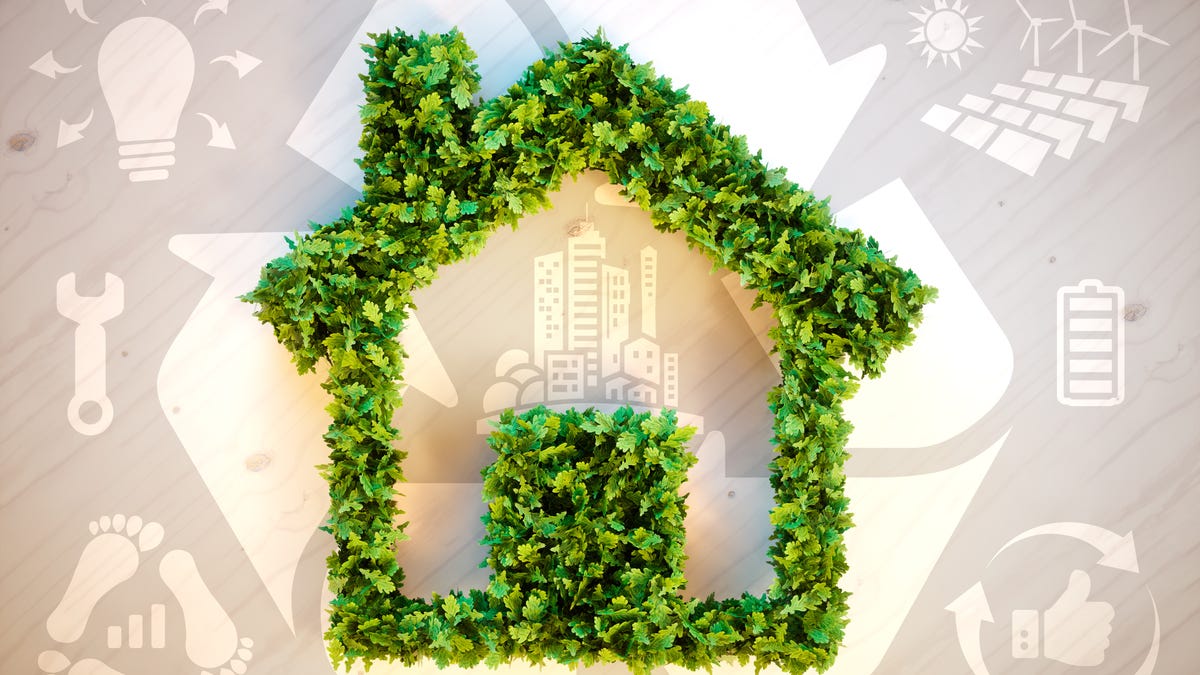Get a Bigger Tax Refund by Claiming Green Energy Tax Credits
If you invested in energy efficient home upgrades in 2023, you could get some of that money back in your tax refund this year.

The Inflation Reduction Act of 2022 boosted the value of energy efficiency tax credits.
Since the expanded child tax credit legislation sits stalled in the Senate, the biggest tax changes this year are related to the Inflation Reduction Act of 2022, which eliminated the lifetime limit for energy efficiency home improvements. If you made your home greener in 2023, it could be time to claim some of your money back on your tax return this year.
Adding alternative energy to your home provides the biggest tax break, but simple improvements to oil or gas appliances or structural items like insulation, windows and doors can also give you money back this tax season. There's also a tax credit for installing alternative energy charging stations for electric vehicles in your home.
Read on to learn all the current tax credits for energy improvements and how to claim them on your taxes. For more tax tips, check out all the possible tax breaks for homeowners.
What are the tax credits for home energy improvements?
The IRS allows two main tax credits for improving energy efficiency at home -- the energy efficient home improvement credit and the residential clean energy property credit.
The first credit deals with improvements to energy efficiency in your home, while the second focuses on alternative energy projects like solar panels or wind turbines. To qualify for either credit, home improvements must be made to a primary residence.
The energy-efficient home improvement credit
Formerly called the nonbusiness energy property credit, the energy-efficient home improvement credit now provides taxpayers 30% back (with limits) for the installation of certain Energy Star-certified devices or other energy improvements like new insulation, doors and windows.
There was previously a $500 lifetime limit on the credit, but starting this tax year, the IRA changed the limit on the energy-efficient home improvement credit to $1,200 annually. Also, water heaters, heat pumps, biomass stoves and biomass boilers have a completely separate credit limit of $2,000, so you can get up to $3,200 back yearly for major energy-efficiency improvements.
Here are the current amounts you can get back on your 2023 tax return for Energy Star-certified devices installed in 2023:
Tax credits for home energy improvements in 2023
| Energy Star-certified product | Energy efficient home improvement credit |
|---|---|
| Energy-efficient furnace or air conditioner | 30% of cost, up to $600 |
| Energy-efficient water heaters | 30% of cost, up to $600 |
| Electric panel or circuit upgrades | 30% of cost, up to $600 |
| Heat pumps and heat pump water heaters | 30% of cost, up to $2,000 |
| Biomass stoves and biomass boilers | 30% of cost, up to $2,000 |
| Insulation | 30% of cost |
| Windows (including skylights) | 30% of cost, up to $600 |
| Exterior doors | 30% of cost, limit of $250 per door or $500 total |
| Home energy audits | 30% of cost, up to $150 |
The residential clean energy credit
Changes to the residential clean energy credit started last year and continue until 2033. You'll get a 30% tax break for expenses related to qualified improvements that use alternative power like solar, wind, geothermal or biomass energy.
(The tax credit had dropped to 26% in 2021, but the IRA pushed it back up to 30% from Jan. 1, 2022 until Jan. 1, 2033.)
Property that can qualify for the residential clean energy credit includes:
- Solar electricity
- Solar water heating
- Wind turbines
- Geothermal heat pumps
- Biomass fuels
- Fuel cells
There's no limit on the residential clean energy credit except for fuel cell property, which is restricted to $500 for each one-half kilowatt of capacity.
What about the tax credit for EV charging stations?
Another credit impacted by the Inflation Reduction Act is the alternative fuel vehicle refueling property credit, a tax break for homeowners who install green energy charging stations. The credit expired at the end of 2021, but it was revived for the 2022 tax year and extended until the end of 2032.
Electric vehicle charging stations qualify for the credit, as well as fueling stations that primarily use ethanol, natural gas, liquefied petroleum gas or hydrogen.
If you installed an electric vehicle charging station or another alternative fuel source at your home in 2023, you could qualify for 30% back for hardware and installation costs, up to a maximum of $1,000.
How do I claim energy efficiency tax credits on my 2023 taxes?
The best tax software will help identify all of your tax credits, usually with a question-and-answer process, and automatically plug them into your tax return. If you complete your return without answering questions about home improvements, be sure to search for those credits or use the software's help section to identify how to claim them.
For filing your taxes on paper, Form 5695, "Residential Energy Credits" takes care of both the residential clean energy credit (Part I) and the energy-efficient home improvement credit (Part II). Form 8911 should be used to claim the alternative fuel vehicle refueling property credit.
For more tax tips, learn why you should create an online IRS account and how to track your tax refund.

